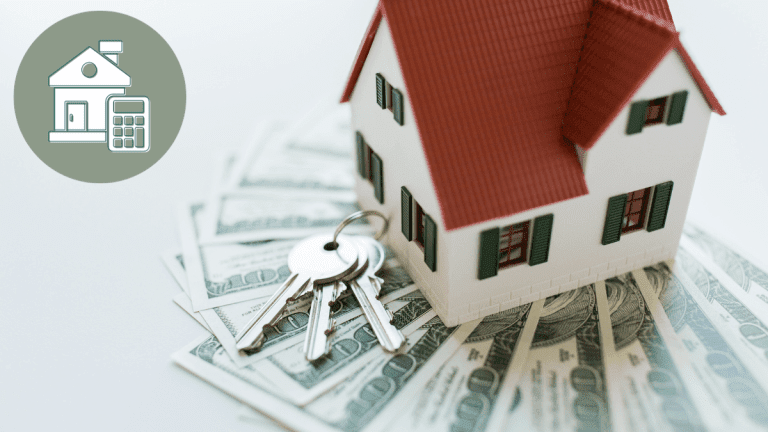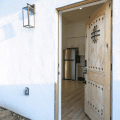In the dynamic world of real estate, what has gained considerable attention in recent years is “ADU.” An Accessory Dwelling Unit is a secondary residential unit located on the same property as a primary residence such as a detached guesthouse, a converted garage, or even a basement apartment. ADUs are designed to provide additional living space, complete with their own kitchens, bathrooms, and separate entrances, making them a versatile and valuable addition to a property.
But you might wonder why property value is such a significant factor in the realm of real estate. The answer is simple: property value is not just about the worth of your home; it’s about your financial future and that often determines the returns on our investments.
For further queries let’s dive in and uncover the secrets of ADUs and their influence on property value.
Factors Influencing ADU’s Impact on Property Value
Location-specific considerations
When it comes to assessing the impact of an Accessory Dwelling Unit (ADU) on property value, one of the foremost factors to consider is the location of your property. While the presence of an ADU can generally enhance property value, the degree of impact varies based on where your property is situated and the local real estate dynamics. Understanding these location-specific considerations is essential when assessing the potential return on your investment in an ADU.
1. Urban vs. suburban vs. rural areas
The type of area your property is located in can make a substantial difference in how an ADU influences property value.
Urban:
In densely populated urban areas, ADUs are often in high demand. They can serve as valuable income-generating units for homeowners. Adding an ADU here may not only increase your property’s value but can also attract renters or buyers looking for additional living space, often at a premium price.
Suburban Areas:
Suburban neighborhoods may have more space and fewer zoning restrictions, making it relatively easier to add ADUs. These areas can also benefit from increased property value, as they provide the convenience of urban living with a suburban feel.
Rural Areas:
In rural settings, the impact of an ADU on property value may be less pronounced. The demand for additional dwelling units might be lower, but it can still serve as a valuable asset for those seeking multigenerational living or rental income.
2. Local real estate market conditions
The state of the local real estate market is another crucial consideration. Factors like supply and demand, property appreciation rates, and rental demand can all affect how an ADU impacts property value.
Seller’s Market
In a seller’s market with high demand and limited inventory, an ADU can make your property stand out, potentially leading to a higher selling price.
Buyer’s Market
In a buyer’s market with more properties available than buyers, an ADU might be a strategic move to attract potential buyers or renters, even if it doesn’t significantly increase property value.
ADU size and quality
The size and quality of your Accessory Dwelling Unit (ADU) play a pivotal role in determining its impact on property value. Let’s break it down:
1. Square footage
The square footage of your ADU plays a crucial role in determining its effect on property value.
Larger ADUs:
Generally, larger ADUs tend to add more value to a property. A spacious ADU provides flexibility, making it suitable for various uses, such as accommodating a larger family or generating more rental income. Homebuyers and renters often appreciate the versatility of a larger ADU, and this can translate into a higher property value.
Compact ADUs:
Smaller ADUs, while still valuable, might not have as pronounced an impact on property value. However, they can be appealing to a specific demographic, such as single individuals or couples looking for more affordable housing options.
2. Construction materials and design
The quality of construction materials and the design of your ADU are equally significant factors in influencing property value. A well-built, aesthetically pleasing ADU can boost the overall appeal of your property.
High-Quality Materials:
Using durable and high-quality construction materials ensures the longevity of your ADU, reducing maintenance costs and enhancing its value.
Thoughtful Design:
A well-designed ADU that maximizes space, offers functionality, and complements the primary residence’s architecture can have a positive impact on property value. Thoughtful design can also increase rental or resale appeal.
Energy Efficiency:
Incorporating energy-efficient features into the ADU, such as insulation, windows, and heating/cooling systems, can not only save costs for occupants but also make your property more attractive to environmentally-conscious buyers or renters.
Rental potential and income generation
The most tangible benefit of having an ADU is its potential to generate rental income. Let’s break it down more.
1. Analyze the rental market in the area
Before you can determine the rental potential of your ADU, it’s crucial to understand the local rental market conditions.
- Conduct thorough market research to assess the demand for rental properties in your neighborhood or city. Consider factors like population growth, job opportunities, and the presence of universities or major employers.
- Comparing similar rental properties in your area, including ADUs if available. Analyze their rental rates, vacancy rates, and amenities offered.
- Stay updated on rental market trends, such as seasonal fluctuations and changes in tenant preferences. For instance, a trend toward remote work might increase demand for ADUs with home office spaces.
2. Estimate potential rental income
Once you’ve gained a comprehensive understanding of the rental market, you can estimate the potential rental income that your ADU can generate.
- Determine the market rent for an ADU of your size and quality in your area by consulting real estate listings, property management companies, or rental websites.
- Factor in any amenities or features that can justify a higher rent i.e., a fully furnished ADU, proximity to public transportation, or access to a backyard or parking can all command higher rental rates.
- Estimate the expenses associated with renting out the ADU, including property management fees, maintenance costs, property taxes, and insurance.
- Calculate the return on investment (ROI) by dividing your net rental income by the initial investment or construction costs of the ADU.
Permits and regulations
Local zoning laws and permitting processes can either facilitate or hinder your ADU project and, subsequently, its impact on property value:
Zoning Laws:
Different areas have different zoning regulations governing ADUs. Some locations may have lenient zoning laws that allow for easy ADU construction, while others may have strict zoning restrictions, limiting the size, placement, and use of ADUs, or non-compliance that can result in costly fines or even the removal of the ADU.
Permitting Processes:
The permitting process can vary in complexity and duration from one jurisdiction to another. Delays in obtaining permits can delay the construction and, ultimately, the potential rental or resale of the ADU.
Impact on Property Value:
If your local zoning laws are ADU-friendly and the permitting process is relatively straightforward, your ADU is more likely to add value to your property. A permitted ADU is a valuable asset, as it ensures that the structure is built safely and meets all necessary requirements.
Compliance with local zoning laws and permitting processes is an absolute necessity when evaluating the influence of an Accessory Dwelling Unit (ADU) on property value. Non-compliance can lead to legal issues, hinder property appraisal, and reduce resale potential, affecting your property’s overall value and marketability.
Positive Effects of an ADU on Property Value
Adding an Accessory Dwelling Unit (ADU) to your property can have a range of positive effects, ultimately enhancing its value:
Increased Rental Income:
An ADU provides an additional source of rental income, boosting your property’s cash flow and overall value.
Expanded Living Space:
The extra living space offered by an ADU can make your property more appealing to potential buyers or renters, adding to its desirability and value.
Enhanced Property Desirability:
Properties with ADUs often attract a wider pool of potential buyers or tenants, increasing demand and, in turn, elevating the property’s value in the market.
These positive impacts not only enhance the financial prospects of your property but also make it a more attractive investment for the long term.
Potential Drawbacks of Adding an ADU
While adding an Accessory Dwelling Unit (ADU) can offer numerous benefits, it’s important to consider potential drawbacks:
Construction Costs:
Building an ADU can be expensive, with costs varying based on size, quality, and location. Initial construction expenses can impact your budget significantly.
Impact on Property Taxes:
The addition of an ADU may lead to an increase in property taxes, as it can be considered an improvement that raises the property’s assessed value. Be prepared for potential tax adjustments.
Zoning and Permitting Challenges:
Navigating local zoning laws and permitting processes can be complex. Zoning restrictions and permitting challenges may delay construction and affect the ADU’s overall feasibility.
Balancing the advantages of an ADU with these potential drawbacks is essential for making an informed decision about whether to proceed with your project.
Tips for Maximizing Property Value with an ADU
- Initial Investment Costs: Plan your budget carefully, factoring in construction, permit fees, and unexpected expenses. Consider financing options such as home equity loans or grants for ADU construction.
- Maintenance and Management: If you plan to rent out the ADU, consider hiring a professional property management company. They can handle maintenance, tenant screening, and rent collection, easing your workload.
- Quality Construction: Prioritize high-quality construction materials and design. A well-built ADU not only adds immediate value but also reduces maintenance costs in the long run.
- Amenities and Features: Consider including amenities like energy-efficient appliances, a private entrance, or a dedicated parking space. These features can attract higher-quality tenants and increase rental income.
- Market Analysis: Conduct thorough market research to understand the demand for ADUs in your area. Tailor your ADU’s design and features to meet the preferences of potential renters or buyers.
- Regular Maintenance: Schedule regular maintenance to keep the ADU in top condition. A well-maintained ADU not only retains its value but can also appreciate over time.
Conclusion
The impact of an ADU on property value is a testament to its versatility as an investment, providing not only financial returns but also the opportunity for enhanced living arrangements and future financial flexibility. As the real estate landscape continues to evolve, ADUs remain a valuable asset for property owners looking to optimize their real estate investments and secure a brighter financial future.







